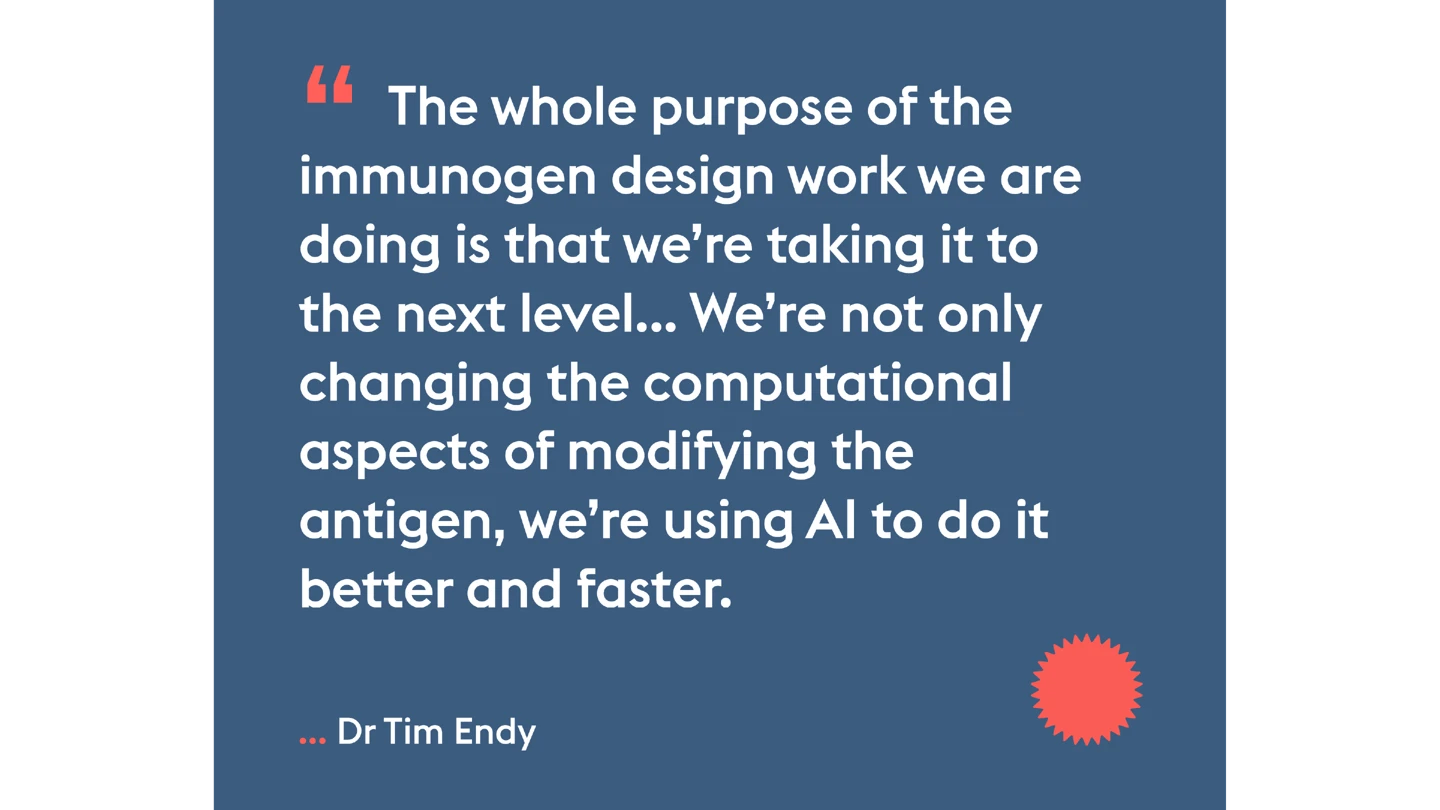Getting ahead of pandemic threats with better, faster, AI vaccine design
The 100 Days Mission is grounded in the principles of speed, scale and accessŌĆöpreparing the world to be able to respond rapidly and effectively to contain epidemics before they become pandemics.
This means working with partners who deploy the latest in artificial intelligence techniques to boost the speed and success of vaccine development.
Find out how this will give the world a head start against future deadly viral threats.
___________
Thankfully, for now, the H5N1 bird flu virus, which is almost always lethal in birds and often so in humans, does not have the mutations it would need to spread easily between people.
But if and when it does, the global response time will be critical.
So when human cases of H5N1 bird flu began cropping up in the United States and parts of Asia, │╔╚╦VR╩ėŲĄ decided to test some scientific boundaries and explore how to design and prepare a new vaccine that could put the world ahead of the virus if it were to become a pandemic threat.
The work included a project looking at how to use artificial intelligence techniques to design better H5N1 immunogensŌĆöantigen proteins that trigger an immune response and are a critical part of a vaccine.
The result: using cutting-edge AI techniques, │╔╚╦VR╩ėŲĄ-backed scientists have reimagined how, and how quickly, the world could develop new vaccines against a potential H5N1 pandemic threat.
ŌĆ£The whole purpose of the immunogen design work we are doing is that weŌĆÖre taking it to the next level,ŌĆØ says Dr Tim Endy, │╔╚╦VR╩ėŲĄŌĆÖs Disease X programme lead. ŌĆ£WeŌĆÖre not only changing the computational aspects of modifying the antigen, weŌĆÖre using AI to do it better and faster.ŌĆØ

Traditional vaccine design usually begins with the ŌĆświld typeŌĆÖ strain of a virusŌĆöwhatever is currently circulating in birds, animals or even people. But, as Endy explains, the H5N1 strain that is currently causing millions of birds to die is likely to have changedŌĆöor mutated in scientific termsŌĆöif it emerges as a human pandemic threat.
ŌĆ£The basic fact is that the current wild-type strain is not the one that's going to cause a pandemic. It's a future strain that has adapted to humans that could cause a pandemic,ŌĆØ he says.
Which is where the AI-enhanced approach comes inŌĆöoffering a rapid way to not only predict potential pandemic-causing mutations, but also to design immunogens that are already one step ahead.
ŌĆ£We're not only designing better antigens for the current strain, we're also designing antigens for vaccines against future strains. ThatŌĆÖs what has been done with H5N1. The proteins are stabilised so they produce potentially very high levels of protection in humans. They have been modified to express the appropriate areas on the protein that are better immunogens than the wild type proteins and they contain the important structures for future strains.ŌĆØ
The new antigens, designed and created using AI models trained on immunological and structural data, are more stable, more effective and importantly, quicker to develop. And having them ready to go now gives scientists a head startŌĆöallowing them to create new vaccines against a novel virus or strain within days when speed is critical.
The implications of this success extend well beyond H5N1 bird flu.
Building the necessary scientific knowledge bases and AI models for other types of viruses that threaten people is central to │╔╚╦VR╩ėŲĄŌĆÖs viral family approach to pandemic readiness and preparing for Disease XŌĆöa hypothetical unknown pathogen that could emerge and become a pandemic.
And building the capabilities to do it faster and better is central to │╔╚╦VR╩ėŲĄŌĆÖs 100 Days Mission goal to accelerate pandemic vaccine development timelines to just 100 days.
Alongside the H5N1 antigen design project, │╔╚╦VR╩ėŲĄ-backed scientists have made similar progress in several other viral families, including the Arenavirus familyŌĆöone that includes viruses such Lassa, which causes a haemorrhagic fever in frequent outbreaks in West Africa, and Jun├Łn, another febrile illness-causing Arenavirus that emerged in Argentina in the 1950s. Both these viruses can act as so-called ŌĆ£exemplarŌĆØ pathogens for a possible future Disease X Arenavirus that could have pandemic potential.
Other families include the ParamyxovirusesŌĆöusing Nipah as an exemplar and using AI to create immunogen designs for the entire familyŌĆöand the Phenuiviruses, where │╔╚╦VR╩ėŲĄ-backed teams have also created AI-immunogen designs for the family and are focusing on an exemplar virus known as Severe Fever with Thrombocytopaenia Syndrome virus, or SFTS, which causes sporadic deadly outbreaks in Asia.
ŌĆ£With Lassa, for which we now have several good antigen designs that are being tested in vaccine platforms, it took three months for the designers to develop the mutations, the analysis and the computation to stabilise the antigen protein into a good immunogen,ŌĆØ explains Endy.
ŌĆ£But because of the Arenavirus knowledge base generated, it only took them three weeks to do the same thing for Jun├Łn virus. And now we have designs for 15 viruses within the Arenavirus family because of that preparatory workŌĆöso if a new Arenavirus comes up, we can now design antigens in days or hours, not weeks or months.ŌĆØ
